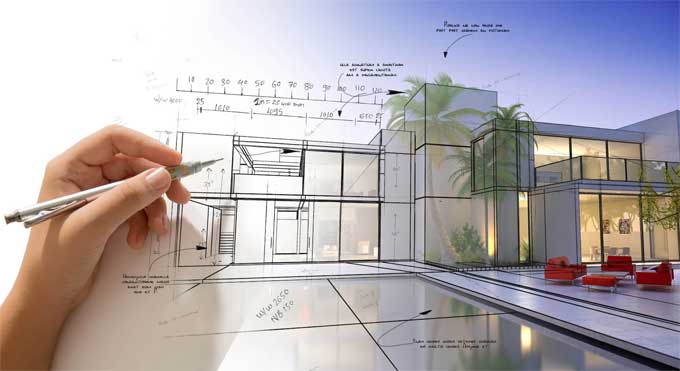Guide to the proper use of CGI images in Architectural Visualization

Any business can succeed or fail based on its marketing efforts, and architectural firms are no different. It is more important than ever for architects to use hyper realistic representations to convince clients of the potential of their upcoming projects. The 3D architectural rendering services are a critical component of any project presentation since they are like visual fantasies that demonstrate the quality of a project.
It is becoming easier to produce hyper realistic 3D architectural images using software programs that specialize in rendering. It takes more than one process or program to create these images. A 3D rendering and architectural 3D modeling service are both vital stages for architectural projects, which integrate raw models with texture images and control virtual material properties.
CGI Image Enriching
Photo Matching Approach
Experts in 3D architecture design can further enhance the CGI image by using the photo matching approach. It blends a 3D simulation of an upcoming structure with an actual photograph that serves as the background. Additionally, the surroundings can be created entirely in 3D. The cost of the rendering can be greatly reduced by using an actual photo of the location in this step, and the finished image appears realistic.
Market Research
Market research confirms that new 3D rendering products are in demand. Let's say you have an idea for a new product and you have a concept sketch and specifications. Your latest product idea is something you are determined to materialize and sell for profit. The success of your venture depends on the desire of your target consumers for your product. The market already offers better, more affordable alternatives to your product or your product has to solve a problem.
A product that offers something unique or a combination of features that is not available from one product alone. Putting a new product idea to the test is an easy way to validate it. Make use of crowd funding resources can share the concept and solicit feedback from the public. Distribution of sales flyers to retailers using the old fashioned method is also fine.
Weather Effects
A CGI expert can enhance a render by adding weather effects. These include snow, rainbows, mist, rain, and more. To make CGI photographs look more like actual photos rather than computer ones, it can help to include minor flaws like cracks, wrinkles, folds, and even dirt or dust. With these specifics, renderings won't ever appear artificial or unnatural.
Product Ideas
In order for a product to succeed, it must bring something new to the market, even if it is something new like CGI images. New entrepreneurs often make the mistake of keeping their CGI images secret. A unique selling point is how your product solves the problems of your customers. It is not necessary to disclose every technical detail. However, the best way to sell your product is to convince people that it does what it says.
If buyers find it unique enough to set it apart from their competitors, experience in consumer product design can help. A unique element might be its design, material, or price. Even though a product is not a brand new commodity, if consumers perceive good value for money, it can still win the competition.
Elements and Items Addition
It is also possible to include more elements and items cropped out of photographs during the architectural visualization phase. A rendered image may incorporate plants, animals, cars, and images smoothly with the help of 3D rendering software. By keeping the 3D scene from having too many features, 3D architecture rendering designers can shorten the rendering time. The CGI image can also be enhanced with text or a brand logo during the architectural visualization stage.
How to improve architectural CGI's Visual Properties?
Denoising
According to the initial or original quality of 3D renders, denoising is frequently a process that is less or more important. Denoising is typically essential in CGI postproduction since adding more effects would just make the noise more obvious.
Color Grading
The basic goal of color grading is to change the saturation and colors to create a specific mood and appearance.
Tone Mapping
The right distribution of the tonal values is ensured by tone mapping. Tone mapping, when done properly, guarantees that the 3D image follows sensible logic. For instance, it will guarantee that natural light will always be brighter than artificial lighting.
To learn more, watch the following video tutorial.
Video Source: Design Input
Visual Properties and Color Adjustments
It is able to adjust the image's overall brightness, color balance, contrast, exposure, and saturation. These adjustments are especially important if a render and a photo were mixed. The visual features of a CGI can be altered to help the pictures and 3D models fit together more naturally rather than look like an uncoordinated collage.
Lighting and Shadows Improvement
Even though 3D visualization software has undergone a lot of changes, including improvements to Revit design services; it is not always simple to accurately replicate actual lighting conditions in 3D. To improve the caustics, transparency, and subsurface iridescence or scattering of 3D architectural visualization and Revit design services, these factors can be manually changed during CGI post-production.



